
ACS Applied Electronic Materials
metrics 2024
Innovating Technologies Through Cutting-edge Research
Introduction
ACS Applied Electronic Materials, published by the American Chemical Society, is a prominent journal in the field of applied materials science, with a particular focus on electronic, optical, and magnetic materials. Established in 2019, this journal has quickly risen to prominence, achieving a 2023 ranking of Q1 in both Electronic, Optical and Magnetic Materials and Materials Chemistry, as well as Q2 in Electrochemistry, reflective of its high-quality contributions and significant impact within the scholarly community. With an impressive Scopus rank of #22 in Electrochemistry, #59 in Electronic, Optical and Magnetic Materials, and #75 in Materials Chemistry, ACS Applied Electronic Materials serves as an essential resource for researchers, professionals, and students seeking to explore innovative advancements in the field. While the journal is not open access, it offers robust subscription options and aims to foster the dissemination of cutting-edge research articles, reviews, and technical notes that contribute to the understanding and application of electronic materials in various technological contexts. As a platform for pioneering research and cross-disciplinary dialogue, this journal is indispensable for anyone invested in the future of materials science.
Metrics 2024
 -
- 4.30
4.30 4.40
4.40 -
-Metrics History
Rank 2024
IF (Web Of Science)
JCI (Web Of Science)
Quartile History
Similar Journals

ECS Journal of Solid State Science and Technology
Bridging Theory and Application in Materials ScienceECS Journal of Solid State Science and Technology, published by the Electrochemical Society, is a prominent journal dedicated to the advancement of research in the field of electronic, optical, and magnetic materials. With an ISSN of 2162-8769 and an E-ISSN of 2162-8777, this journal has established a significant presence since its inception in 2012, spanning critical developments in solid-state science that are essential for innovative technologies. Operating within the United States and recognized for its global outreach, it holds a respectable Q3 category ranking in the materials science category as of 2023, reflecting its commitment to high-quality research and its role in bridging theoretical and applied aspects of materials science. Researchers, professionals, and students alike will find vital information and cutting-edge studies that further the understanding and applications of solid-state technologies. The journal is accessible to an extensive audience, making it an invaluable resource for those engaged in the ever-evolving landscape of materials science.

Materials Chemistry Frontiers
Shaping Tomorrow’s Materials with Today’s ResearchMaterials Chemistry Frontiers, published by the esteemed Royal Society of Chemistry, stands as a leading journal in the realm of materials science and chemistry, with an impressive Q1 ranking in both Materials Chemistry and Materials Science categories as of 2023. This open-access journal, operating from the United Kingdom, offers a platform for researchers, professionals, and students to disseminate high-quality, impactful research. With its E-ISSN 2052-1537, the journal is dedicated to publishing cutting-edge articles, reviews, and research communications that explore innovative materials and their applications, fostering a comprehensive understanding of the complex interplay between materials and their chemical properties. With consistent rankings in the Scopus metrics, being positioned at the 25th percentile among 317 in the Materials Chemistry category, it highlights its pivotal role in advancing the field. The journal thrives on contributions that broaden the scope of knowledge from 2017 to 2024 and beyond, solidifying its status as an essential resource for contemporary research in materials science.

Electronic Materials Letters
Bridging Theory and Application in Materials ScienceElectronic Materials Letters is a distinguished journal dedicated to the dissemination of research in the field of electronic, optical, and magnetic materials. Published by the Korean Institute of Metals and Materials, this journal has established itself as a critical platform for scholars and practitioners since its inception in 2008, with coverage extending through 2024. With an ISSN of 1738-8090 and an E-ISSN of 2093-6788, it has achieved a commendable Q3 categorization for 2023, ranking 107 out of 284 in the Scopus database's specialized field, reflecting its relevance with a 62nd percentile position among its peers. Although this journal operates under a traditional access model, its rigorous peer-review process ensures that only the most impactful research reaches its audience, thereby maintaining high scholarly standards. Positioned in South Korea at the heart of technological innovation, Electronic Materials Letters plays a vital role in bridging the gap between theoretical investigations and practical applications, making it an essential resource for researchers, industry professionals, and students aiming to thrive in the rapidly evolving materials science landscape.
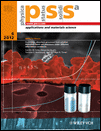
PHYSICA STATUS SOLIDI A-APPLICATIONS AND MATERIALS SCIENCE
Elevating the discourse in materials applications.PHYSICA STATUS SOLIDI A-APPLICATIONS AND MATERIALS SCIENCE, published by WILEY-V C H VERLAG GMBH, stands as a prominent journal in the fields of condensed matter physics, materials science, and engineering. With an ISSN of 1862-6300 and E-ISSN 1862-6319, this journal has been actively contributing to scientific discourse since its inception. The journal currently holds a respectable Q2 ranking across several categories including Electrical and Electronic Engineering and Materials Chemistry, demonstrating its significance in advancing research and development within these domains. Although it does not offer open access, the journal ensures high-quality peer-reviewed content that is critical for researchers and professionals aiming to stay at the forefront of materials science innovations. The journal’s convergence years, extending from 2005 to 2024, reflects its ongoing commitment to publishing impactful research. By facilitating discussions on applications and advances in materials science, PHYSICA STATUS SOLIDI A continues to be an essential resource for those striving to contribute to this dynamic field.
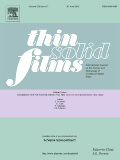
Thin Solid Films
Illuminating Innovations in Surface and Coating ResearchThin Solid Films, published by ELSEVIER SCIENCE SA, is a highly regarded journal in the fields of materials science and physics, specifically focused on the properties and applications of thin films. Established in 1967, this journal has been a leading platform for disseminating research on surfaces, coatings, and advanced materials. With its consistent publication through the notable HIndex of scholarly impact, this journal showcases a diverse range of studies ranging from electronic, optical, and magnetic materials to novel surface and interface engineering. In recent evaluations, Thin Solid Films has achieved significant rankings, including a Q2 position in Materials Chemistry and Metals and Alloys, reflecting its relevance and importance in ongoing scientific discourse. Although it does not offer open access, it provides a vital resource for researchers, professionals, and students seeking to advance their knowledge and expertise in thin film technology. The journal's commitment to quality and innovation makes it an essential publication for anyone engaged in the field.
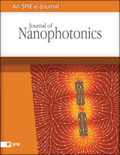
Journal of Nanophotonics
Pioneering Discoveries in NanophotonicsThe Journal of Nanophotonics, published by SPIE-SOC Photo-Optical Instrumentation Engineers, is an esteemed platform dedicated to advancing the field of nanotechnology through pioneering research in photonics. Since its inception in 2007, this journal has become instrumental in disseminating innovative findings and fostering collaborative discussions, especially in the domains of Condensed Matter Physics, Electronic, Optical and Magnetic Materials, and Nanoscience and Nanotechnology. Currently ranked within the Q3 category across these fields, it serves as a vital resource for academics, industry professionals, and students keen on exploring the multifaceted applications and implications of nanophotonic technologies. With its convergence set to continue until 2024, the journal offers a non-open-access model, ensuring rigorous peer-review standards and high-quality publications that contribute to the global body of knowledge.
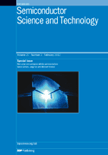
SEMICONDUCTOR SCIENCE AND TECHNOLOGY
Exploring the forefront of materials science and engineering.Semiconductor Science and Technology is a pivotal journal in the fields of condensed matter physics, electrical and electronic engineering, and materials science, published by IOP Publishing Ltd. With an ISSN of 0268-1242 and an E-ISSN of 1361-6641, this esteemed journal has been disseminating groundbreaking research since 1986 and is set to continue through 2024. Recognized in the latest categorizations, it holds a notable Q2 ranking in Condensed Matter Physics, Electrical and Electronic Engineering, and Materials Chemistry, alongside a Q3 ranking in Electronic, Optical, and Magnetic Materials, highlighting its significant contribution to the advancement of these disciplines. Although it does not operate under an open access model, the journal provides critical access options for researchers and professionals seeking to foster innovation and collaboration within the semiconductor community. As a vital resource, Semiconductor Science and Technology not only supports the dissemination of high-quality research but also serves as a platform for emerging trends and developments that are shaping the future of semiconductor technology.

JAPANESE JOURNAL OF APPLIED PHYSICS
Bridging Theory and Practice in PhysicsThe Japanese Journal of Applied Physics is a premier publication in the field of applied physics, offering a platform for researchers and professionals to present their findings and innovations. Published by IOP Publishing Ltd, this esteemed journal has been active since 1963 and continues to contribute significantly to the understanding and advancement of applied physics across diverse applications. The journal is recognized for its rigorous peer-review process and high-quality publications, evidenced by its 2023 ranking of Q2 in Engineering (Miscellaneous) and Q3 in Physics and Astronomy (Miscellaneous). With an accessible ISSN of 0021-4922 and E-ISSN 1347-4065, the journal cultivates a global readership, fostering collaboration and innovation within the scientific community. Although the journal does not currently offer open access options, its valuable insights into the latest technological advancements and theoretical developments remain crucial for students, researchers, and industry professionals alike. By bridging the gap between fundamental physics and practical applications, the Japanese Journal of Applied Physics plays a vital role in shaping the future of applied sciences in Japan and beyond.

SOLID-STATE ELECTRONICS
Advancing the Frontiers of Solid-State PhysicsSOLID-STATE ELECTRONICS, published by Pergamon-Elsevier Science Ltd, is a highly regarded journal committed to advancing the field of solid-state physics and its applications. With an ISSN of 0038-1101 and an E-ISSN of 1879-2405, this journal has been a cornerstone of scholarly communication since its inception in 1960. Covering a rich spectrum of topics, it features in the Q3 category for Condensed Matter Physics, Electrical and Electronic Engineering, and Materials Science, reflecting its robust engagement in these critical fields. Despite not being an open-access journal, it provides valuable insights and research findings accessible to both academia and industry professionals, ensuring the dissemination of cutting-edge knowledge. With a strong focus on empirical research and theoretical developments, SOLID-STATE ELECTRONICS aims to bridge the gap between fundamental science and practical application, making it an essential resource for researchers, professionals, and students alike in the United Kingdom and beyond.
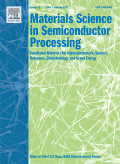
MATERIALS SCIENCE IN SEMICONDUCTOR PROCESSING
Driving Excellence in Semiconductor ScienceMATERIALS SCIENCE IN SEMICONDUCTOR PROCESSING, published by ELSEVIER SCI LTD, is a premier journal dedicated to advancing knowledge in the field of semiconductor processing, an area pivotal to the development of modern electronic applications. With an ISSN of 1369-8001 and an E-ISSN of 1873-4081, this journal exemplifies excellence with a remarkable standing in various disciplines, as indicated by its 2023 Scopus rankings—occupying the top quartile (Q1) in Condensed Matter Physics and Mechanical Engineering, and Q2 in Materials Science and Mechanics of Materials. The journal not only provides a platform for high-impact original research, reviews, and significant findings but also bridges theoretical and practical implications within the field. Operating under a publication timeline that extends from 1998 to 2025, it remains an essential resource for researchers, professionals, and students seeking to deepen their understanding of semiconductor materials and processes. Although not an open-access journal, it offers robust options for access, ensuring that cutting-edge developments are made available to the scholarly community.